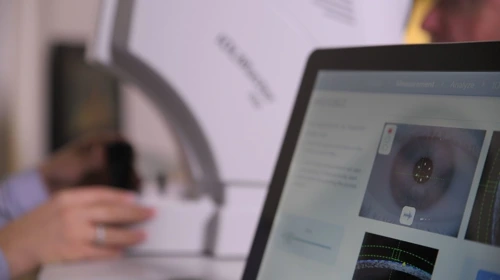

With the progress in cataract surgeries, in the types of lenses that implanted in the surgery and the need to be precise in the number remaining after the surgery, it is crucial to examine the accuracy of the biometric devices used as a basis for calculating the implanted lens. In this study, we examined the differences between three new biometric devices and a corneal topography device, and also tested the effect of the differences between the devices on the calculation of the implanted lens in cataract surgery candidates.
It was found that between the three biometric devices IOLMaster700, Eyestar900 and Anterion there is a very good agreement in the parameters of eye length and anterior chamber depth, while when comparing the corneal curvatures with the Pentacam corneal topography device, differences were found. A good correlation was found between all the parameters of the devices except for the axis of the corneal curvatures.
Examining the clinical effect of these differences on the calculation of the proposed lens for implantation according to different formulas, differences were found so that based on the IOLMaster700 device, the power of the lens was consistently lower by 0.50 to 1.00 diopters. And based on the corneal data from the topography device, the calculated lens is consistently 0.75 diopters higher. Other differences were found in the power of the lens when the patients were stratified to low versus medium-high cylinders.
In conclusion, in an era where cataract surgeries can be considered refractive surgeries rather than just rehabilitative procedures, and the willingness there will not be an residual number in the glasses after cataract surgery, the compatibility between the biometric devices and the effect of these differences on the calculation of the implanted lens are extremely significant.
Dr. Ben-Eli: "I am very proud and excited about the publication of this article in a special way since I led it together with 7 (!) graduates of our department - 5 of them are graduates of the Strauss Campus, and one of them is the first author.
It makes me very proud that our graduates integrate into the work at Hadassah Hospital and do excellent work, both in the clinical and research aspects."
